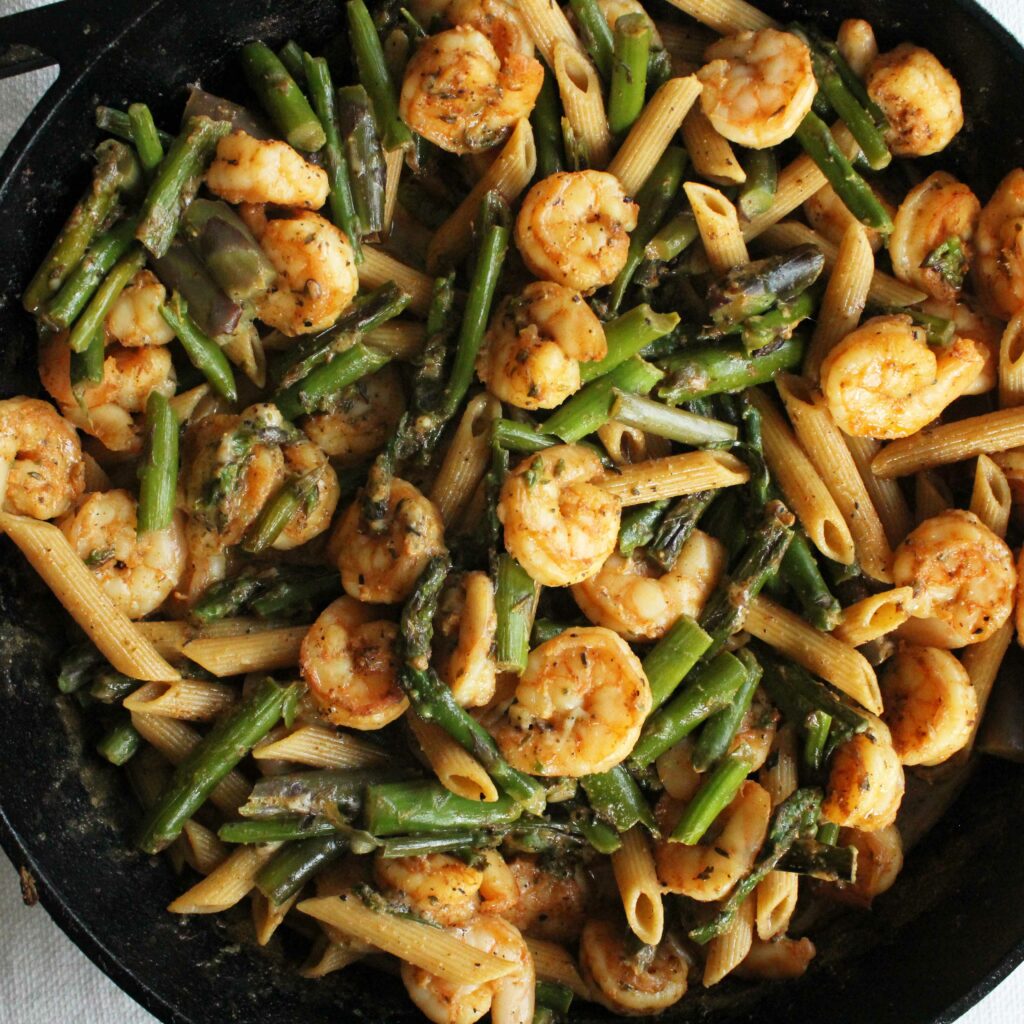Fiber is essential for gut, brain, and heart health, but 95% of Americans aren’t eating enough. Learn what fiber is, why you need it, and how to get it.
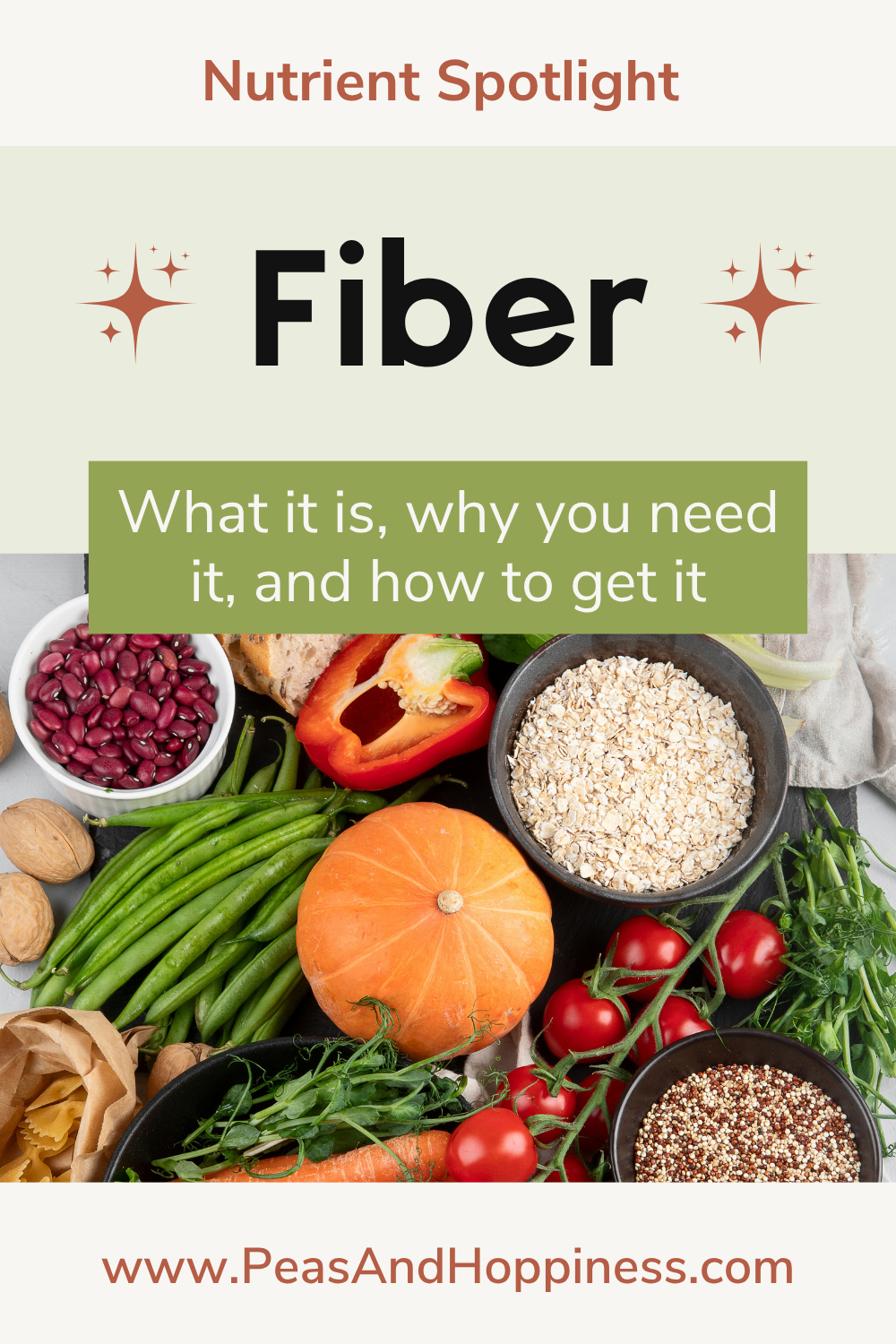 Have you felt the protein panic currently gripping our nation?
Have you felt the protein panic currently gripping our nation?
I exaggerate – but only slightly. From wellness influencers recommending 150+ grams of protein per day to chips made from chicken, it seems like the concern about protein is everywhere.
Don’t get me wrong, protein is definitely important.
But there’s another nutrient that’s essential for almost every aspect of health – and most of us aren’t eating enough of it.
Enter: fiber.
Learn what fiber is, why you need it, and how to get it.
What Is Fiber, Anyway?
Fiber is your gut’s best friend. Or rather, it’s your gut microbiome’s best friend.
Fiber is a type of carbohydrate that your body can’t digest. Instead of breaking it down and absorbing nutrients from fiber, it travels through your system into your large intestine where it feeds your microbiota – aka the super-important microorganisms in your gut that provide numerous health benefits and are a key part of your gut microbiome.
There are two types of fiber: soluble and insoluble fiber.

What is Soluble Fiber? What Does Soluble Fiber Do?
Soluble fiber dissolves in water and forms a gel-like substance in your gut. It sticks to cholesterol in the digestive tract and gets rid of it.
This means that increasing soluble fiber in your diet can help lower LDL cholesterol, the type of cholesterol that is associated with poor heart and brain health. My tip for remembering LDL cholesterol: L stands for “Lousy,” the type of cholesterol you want “Less” of.
Food Sources of Soluble Fiber: oats, peas, beans, the flesh of apples, citrus fruits, carrots, barley, and psyllium (sometimes used as an ingredient in fiber-fortified foods, like granola bars)
Soluble Fiber Supplements: Psyllium husk supplements have been shown to help lower LDL cholesterol.
What is Insoluble Fiber? What Does Insoluble Fiber Do?
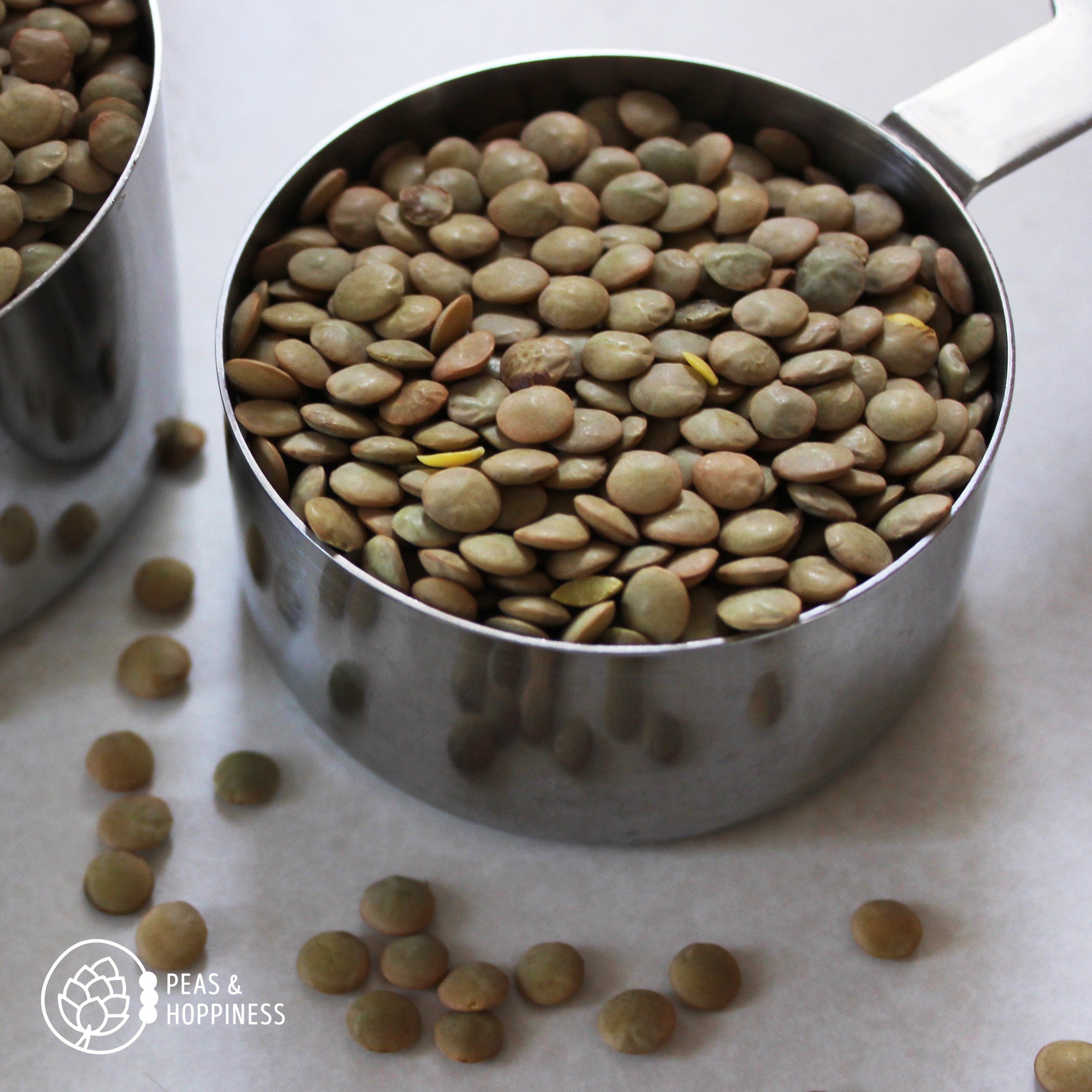 Insoluble fiber does not dissolve in water. Instead, it provides bulk to stools and promotes movement through your digestive tract. This means it helps prevent both constipation AND loose stools. It’s sort of the “goldilocks effect” of a balanced diet.
Insoluble fiber does not dissolve in water. Instead, it provides bulk to stools and promotes movement through your digestive tract. This means it helps prevent both constipation AND loose stools. It’s sort of the “goldilocks effect” of a balanced diet.
Food Sources of Insoluble Fiber: whole grains, nuts, beans, peels of apples (and other produce like zucchini and potatoes), and cauliflower
Supplements of Insoluble Fiber: have not shown the same benefit as fiber included in real food.
Why Do You Need Fiber? What are the Health Benefits of Fiber?
Fiber does more than just help you poop, though it’s great at that. Instead of directly nourishing us with calories that we absorb, fiber has a multitude of other health benefits.
 Gut health: taking a probiotic supplement won’t help much if you’re not feeding your gut microbiota! Fermentable fiber (found in onions, asparagus, bananas, oats, and more) is your gut bacteria’s favorite snack. Keeping gut bacteria fed keeps them – and your entire gut microbiome – healthy.
Gut health: taking a probiotic supplement won’t help much if you’re not feeding your gut microbiota! Fermentable fiber (found in onions, asparagus, bananas, oats, and more) is your gut bacteria’s favorite snack. Keeping gut bacteria fed keeps them – and your entire gut microbiome – healthy.
Heart health: soluble fiber sticks to cholesterol in your gut and gets rid of it, thus lowering LDL (bad) cholesterol naturally to improve heart health.
Mental health: your microbiome produces dopamine and up to 90% of serotonin. Keep your gut healthy by feeding your microbiota a diverse, fiber-rich diet to help manage the stress response, depression symptoms, and anxiety.
Blood sugar balance: fiber slows down how quickly carbohydrates are digested and absorbed, thus preventing spikes in blood sugar and giving you more sustained energy throughout the day.
Cancer prevention: a high-fiber diet, especially one that includes whole grains, is associated with a reduced risk of colorectal cancer. Fiber helps promote movement in the colon and feeds gut bacteria. The gut bacteria create byproducts called “postbiotics” such as short-chain fatty acids and polyphenols, which are protective against cancer.
Eat more fiber with our meal planning app! Get 11 new meal ideas every week with macros balanced by a registered dietitian including recipes designed to give you more variety, flavor, and fun at mealtime.
In general, fiber also adds substance to foods and slows down digestion. This can help you to feel full and satiated longer and prevent spikes in blood sugar when eating foods with carbohydrates.
As an example, think about how full you feel after drinking a half cup of orange juice compared to eating an orange. The amount of energy in these foods is about the same. The difference is the fiber content in the orange, which is why you likely feel fuller after eating the orange than you would after drinking a half cup of juice.
Where to Find Fiber (and why Fiber from Food is Usually Better Than Supplements)
Fiber is only found in plants, so if you’re not eat enough fruits, vegetables, legumes, or whole grains you’re likely in the same boat as up to 95% of Americans and aren’t eating enough.
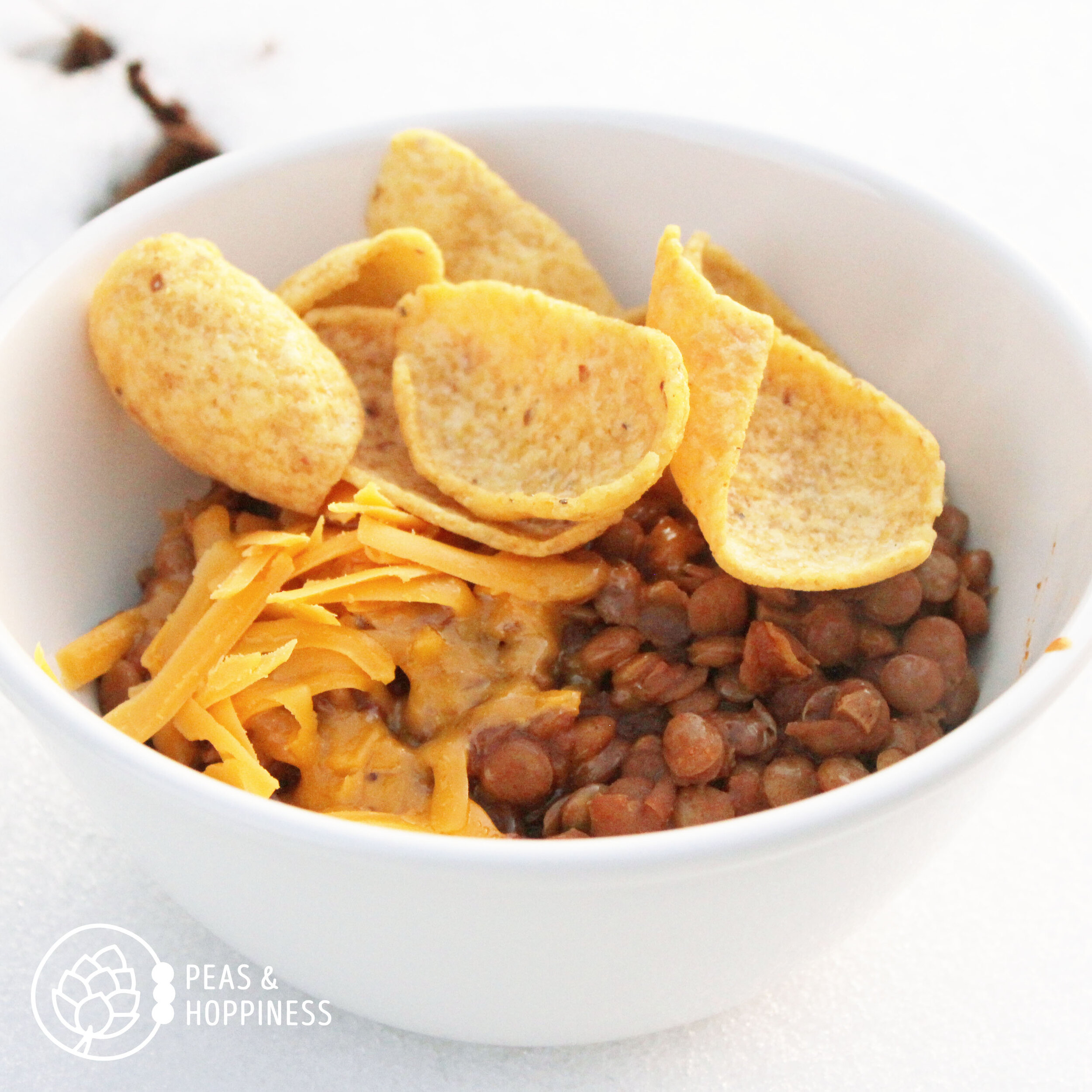 The general guideline for how much fiber you need in a day is about 14 grams of fiber for every 1,000 calories. This equals about 25 grams per day for women and 30-38 grams per day for men.
The general guideline for how much fiber you need in a day is about 14 grams of fiber for every 1,000 calories. This equals about 25 grams per day for women and 30-38 grams per day for men.
Taking a fiber supplement like psyllium husk can give you some benefits – including lowering LDL cholesterol and improving gut health – but supplements alone won’t give you the same results as a fiber-rich diet.
To see the blood sugar and cancer-preventing benefits, fiber needs to come from foods. Fiber in food is what helps with gut motility (linked to cancer prevention and bowel consistency), satiety (feeling full after meals), and blood sugar balance (because it slows digestion and absorption of carbohydrates).
Try these fiber-rich foods and recipes to add to your daily eating pattern:
- Beans and lentils: Curried Red Lentils or Lentil Frito Pie
- Whole grains like oats, quinoa, and brown rice: Pumpkin Porridge or Perfect Rice
- Vegetables like broccoli, spinach, carrots, and Brussels sprouts: Lemon Pesto Penne with Broccoli and Bursted Cherry Tomatoes or Easy Roasted Veggies
- Fruits like berries, apples, and pears: Bacon & Brussels Sprouts Crunchy Fall Salad or Acorn Squash Stuffed with Dried Fruits and Nuts
- Nuts and seeds like chia, flax, and almonds: Savory Granola Bars or Savory Roasted Pumpkin Seeds
As you increase the amount of fiber you eat, make sure to drink lots of water. If you’re dehydrated, too much fiber can cause constipation!
Rather than eating all the fiber-rich foods in one day, it’s better to gradually increase your fiber intake to let your body (and microbiome) adjust. Too much fiber too quickly can be a shock to your system and cause some unpleasant side effects like gas, bloating, and abdominal pain.
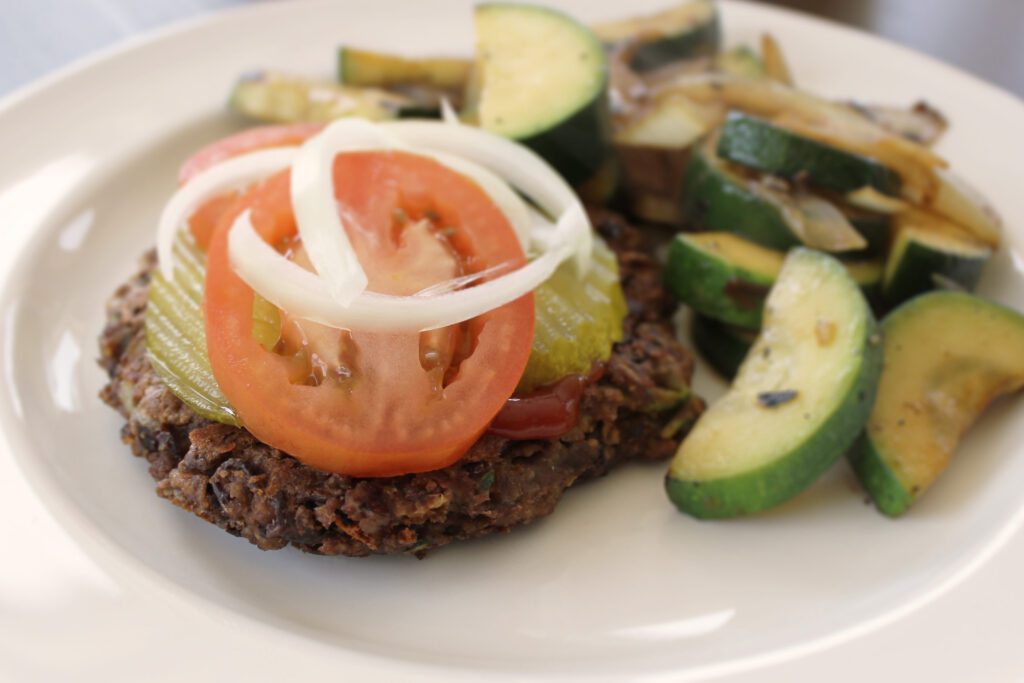
How to Increase Your Fiber Intake (Without Eating Cardboard)
If you’re worried that eating more fiber means giving up flavor, let me assure you that there’s a better option.
I created the Peas and Hoppy Meal Guides app to give you more variety, more flavor, and better nutrition at mealtime – without increasing your mental load.
Every week you get a meal plan in your app with 11 meal ideas that you can customize – delete what you don’t need, adjust servings, and substitute recipes from over 800 dietitian-approved options.
Once you’ve perfected your plan, the app creates the shopping list for you, saving you tons of time and money at the grocery store.
Try it free for 30 days and see how easy, tasty, and fun healthy eating can be!
Whether you’re exploring new vegetables or adding more legumes to your plate, I hope you enjoy the health – and flavor – benefits of these yummy high-fiber foods.
Happy fiber eating,
Dietitian Ann
Fiber Without the Cardboard
The Peas & Hoppy Meal Guides app makes it easy to enjoy fiber-rich, delicious meals every week – without having to think about it.
✅ 11 dietitian-designed recipes
✅ Customizable plans
✅ Smart grocery list that saves you time
Try it FREE for 30 days and see how simple healthy eating can be!
“The Peas and Hoppy Meal Guides app helps us live a better life because we’re making sure we get the nutritious food to eat that we need.”
-Kathy C., member of the Peas & Hoppy Meal Guides
